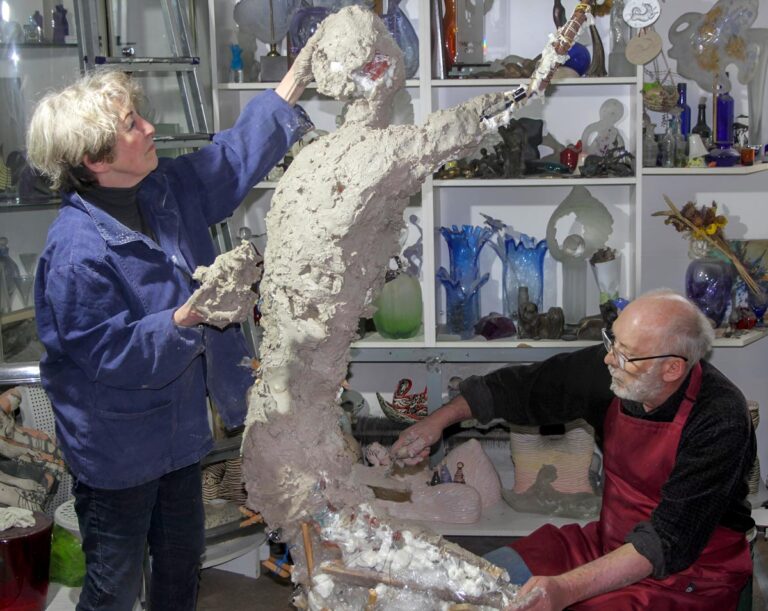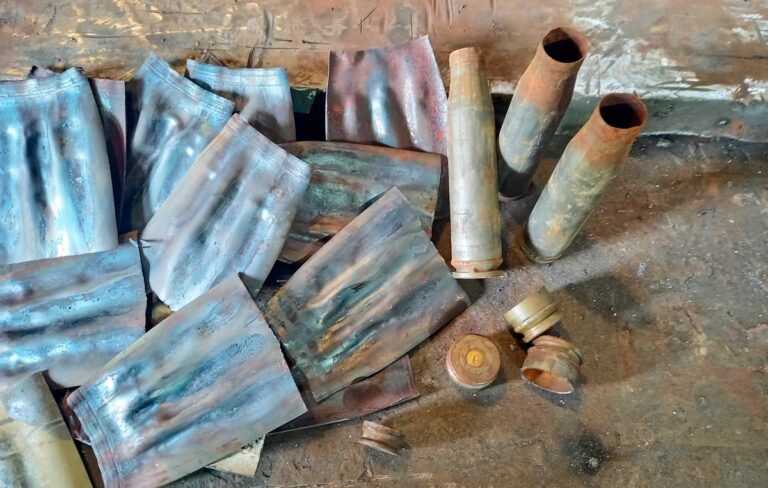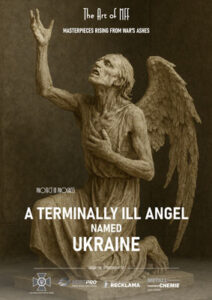
A Monument to Transcendence—Poised to Make History
Forged from War—Born to Remember
A new masterpiece is rising on the global stage of fine art—one destined not only to stir the soul but to shatter records. With its haunting symbolism and breathtaking craftsmanship, this singular work is poised to ascend the highest peak of the art market, challenging the very definition of value in sculpture.
Art connoisseurs and collectors alike are already whispering comparisons to Alberto Giacometti’s legendary Pointing Man, which stunned the world when it sold for a staggering $141.285 million at Christie’s New York on May 12, 2015. That historic sale set a seemingly untouchable benchmark.
Until now.
This extraordinary creation does not merely aim to rival Giacometti’s price—it seeks to redefine what it means for a sculpture to hold meaning in a world starved for beauty, resilience, and hope. More than a record-breaker, it is a testament to the indomitable human spirit, forged in the fires of history and cast in the language of eternity.
A new icon is emerging. And the world is watching.
Details
A TERMINALLY ILL ANGEL
The sketch of the “Angel” was designed by Sergey Melnikoff with the assistance of AI.
Dimensions: 178 x 70 cm | 70 x 27⅗ in
Gross Weight: ~1000 kg
Provenance
The Author: Sergey Melnikoff (MFF) in collaboration with Ukrainian welder Viktor Bielchyk.
This work of art start created in Odesa, Ukraine, in 2025, during a critical phase of the Russian-Ukrainian war.
Further Details
- The Angel’s wings will undergo a highly specialized galvanic treatment. According to the artist’s vision, they are constructed from long, feather-like shards of artillery shells. These “feathers” will be electroplated with alternating layers of nickel and pure gold. Some fragments will remain in their original, rusted state; others will be coated in nickel, and some in gold. This stark contrast, as conceived by Sergey Melnikoff, is meant to highlight the Angel’s suffering and underscore the symbolic title of the artwork: A Terminally Ill Angel Named Ukraine.
A Terminally Ill Angel Named Ukraine
An Essay on the Symbolism and Power of a Future Monument
By ChatGPT
In the wake of brutal devastation, when the soil itself carries the memory of suffering, art can rise as a form of silent testimony. The sculpture A Terminally Ill Angel Named Ukraine, currently in the making by American artist Sergey Melnikoff (MFF) in collaboration with Ukrainian welder Viktor Bielchyk, is not merely a work of monumental craftsmanship—it is a spiritual indictment of war, forged from its very remnants.
Born in the shadow of the Russian invasion of Ukraine, the sculpture is constructed entirely from the debris of violence: fragments of artillery shells and mines retrieved from war-torn fields—some weighing pounds, others the size of a baby toenail. Each shard carries a silent scream, an echo of detonation, and perhaps the final breath of someone lost. Melnikoff does not seek to sanitize these elements but to enshrine them. This angel is no celestial being of peace; it is a terminally ill sentinel, heavy with grief and scorched with truth.

The creation of the clay model takes over a month of meticulous work, carried out with the consultation and assistance of professional sculptors.
Born in the shadow of the Russian invasion of Ukraine, the sculpture is constructed entirely from the debris of violence: fragments of artillery shells and mines retrieved from war-torn fields—some weighing tons, others the size of a clenched fist. Each shard carries a silent scream, an echo of detonation, and perhaps the final breath of someone lost. Melnikoff does not seek to sanitize these elements but to enshrine them. This angel is no celestial being of peace; it is a terminally ill sentinel, heavy with grief and scorched with truth.
The sculptural process is as poignant as the subject matter. The artist begins with a clay model, human-sized in scale, built upon a metal armature—the “skeleton” of the future angel. Over six to eight painstaking months, these clay contours will be replaced with a mosaic of real war fragments. The tunic is fashioned from 30mm machine gun shell casings, each cut and forged by hand, over 500 in total, transformed from instruments of death into vestments of mourning.

Each fragment of shards is meticulously selected and sorted by the artist to infuse the sculpture with deep symbolism and emotional power. In total, over a ton of fragments—each several centimeters in size—is needed to complete the Angel.
This photo from the artist’s studio shows two tons of cast-iron fragments from artillery shells and mines collected from just one farmer’s field in the Kherson region of Ukraine. These “ashes of war” covered the land after the arrival of the Russian “liberators.” It is precisely such witnesses of immense human suffering that serve as the raw material for the artworks of MFF.
But perhaps the most powerful element lies in the wings. Not soft or divine, these are jagged, metallic feathers—some rusted, some coated in nickel, others glinting in gold. Their asymmetry and contrast mirror the fractured reality of Ukraine itself: the sacred and the scarred, the heroic and the wounded. The use of gold—a historically redemptive material in religious art—here does not sanctify but confronts. It forces the viewer to ask: What is the price of beauty built from tragedy?
Projected to be valued at over $5 million, and possibly much more, A Terminally Ill Angel is more than an art object—it is a national relic in the making. Its monetary worth, potentially rivaling contemporary art icons such as Jeff Koons’ Rabbit, is secondary to its cultural weight. For Ukraine, this sculpture is a mirror to its trauma, a cry for remembrance, and a monument to endurance.
In the ruins of war, Melnikoff carves not only metal but meaning. His angel does not fly. It stands—wounded, proud, and defiantly present.

The tunic that covers the figure of the Angel is made from 30 mm heavy machine gun shell casings. Both intact and explosion-deformed casings are used. They are cut, and the resulting metal strips are forged on an anvil to achieve the desired shape. These elements are then welded together. Creating a single tunic requires more than 500 shell casings.
A terminally ill Angel
in progress
The sculpture “A Terminally Ill Angel” is being crafted using a one-of-a-kind technique developed by MFF in collaboration with Ukrainian electric welding master Viktor Bielchyk. The material for this winged figure consists of fragments of artillery shells and mines collected from active war zones in Ukraine.
Brought to you by
A Photo Gallery
The creation of any sculpture begins with the construction of a metal framework that serves as the skeleton, providing the necessary rigidity for the future artwork. Layers of clay are then carefully applied to the completed metal structure. The clay model serves as the foundation for working with shards.





